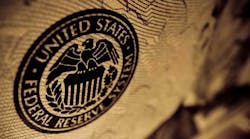WASHINGTON - The Federal Reserve announced Wednesday it would start tapering its massive stimulus program in January, giving a vote of confidence in the recovery of the U.S. economy and job market.
The Fed will buy $75 billion on bonds a month next month, down from the $85 billion monthly asset purchases it has made for a year, the Federal Open Market Committee said after a two-day monetary policy meeting.
The Fed action marked the beginning of the end of five years of its easy-money policy, aimed at helping the world's largest economy recover from the devastating recession.
"In light of the cumulative progress toward maximum employment and the improvement in the outlook for labor market conditions, the Committee decided to modestly reduce the pace of its asset purchases," the FOMC said in a statement.
The Fed said it would pare $5 billion off monthly purchases of Treasuries and $5 billion off purchases of mortgage-backed securities and likely would take "further measured steps at future meetings" if the economy continues to improve.
The central bank, as widely expected, held its key federal funds interest rate at 0% to 0.25%, where it has been for five years to support the recovery.
With its main rate tool near zero, the central bank has used unprecedented large-scale asset purchases in an effort to tamp down long-term interest rates to stimulate growth and job creation.
The FOMC said it would likely keep the current rate "well past the time" that the unemployment rate declines below 6.5%. That marked an extension of time for the supportive ultra-low rate from previous guidance.
"By putting more conditions on its first increase in short-term interest rates, the Fed shifted market expectations for this from mid-2015 to later that year or possibly early 2016. This should put downward pressure on long-term rates," said Ryan Sweet of Moody's Analytics.
Noting the fiscal drag of the federal government's tax hikes and spending cuts on growth since the start of the current bond-buying program, the FOMC said it saw the improvement in the economy and labor market as evidence of "growing underlying strength in the broader economy."
Risks More Balanced
The statement said that risks to the economic outlook were "more nearly balanced," in contrast to previous statements that pointed to "downside" risks.
But the policy panel voiced concern about weak inflation in the tepid economy, saying it was "carefully" monitoring developments showing inflation will move back toward its 2% objective over the medium term.
Inflation is well below the target. In November, the Fed's preferred measure, the personal consumption expenditures price index, was up only 0.7% at an annual rate.
The lone FOMC dissenter to the change in the asset-purchase program was Boston Fed President Eric Rosengren, who said it was "premature."
The taper decision took many analysts by surprise. A slight majority had expected the Fed to wait until the January or March meetings to pare bond purchases.
"The overall impression is one of greater confidence that the economy is gaining momentum, though the Fed is at pains to point out that any rise in rates is still a long way off, even if unemployment dips below the 6.5% threshold relatively soon," said Ian Shepherdson of Pantheon Macroeconomics.
Fed Chairman Ben Bernanke, in a news conference, emphasized that the taper did not mean a reduction in the Fed's support because of the growing size of the bond holdings and the near-zero interest rate.
"We're not doing less," Bernanke said. "We have been aggressive to keep the economy growing."
"I want to emphasize that we are going to be data-dependent. We could stop purchases if the economy disappoints. We could pick them up somewhat if the economy is stronger."
Asked if Fed Vice Chair Janet Yellen, who is nominated to succeed him when his eight-year tenure ends on Jan. 31, supported the policy decision, Bernanke said: "She fully supports what we did today."
In updated economic forecasts, the Fed projected 2014 gross domestic product growth between 2.8% and 3.2%, a tenth of a point wider than the prior 2.9% to 3.1% range seen in September.
The unemployment rate, which fell to a five-year low of 7% in November, was expected to fall to a range of 6.3% to 6.6% by the end of 2014, an improvement from the prior estimate of 6.4% to 6.8%.
But the inflation rate still was only seen returning to the Fed's 2% objective at end-2015, with a forecast range of 1.5% to 2%.
Most Fed officials saw the first rate hike near the end of 2015.
Copyright Agence France-Presse, 2013



